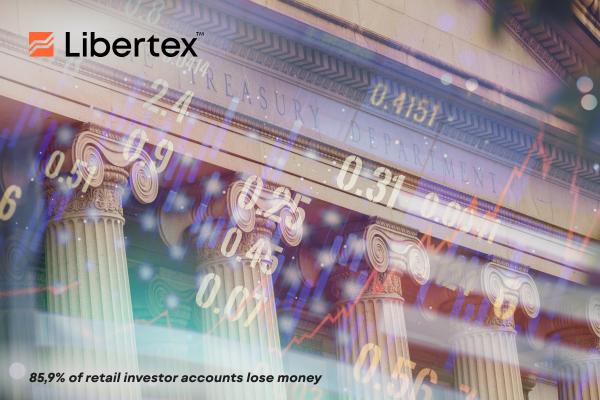One of the biggest stories of recent weeks has undoubtedly been the fast-approaching debt-ceiling deadline in the United States. It seems almost impossible to imagine, but the US has nearly reached its $31.381 trillion debt limit, after which there is a real risk of the country being unable to meet its obligations to creditors. The implications of this would, of course, be unthinkable for the world's biggest economy, and markets have been understandably anxious for a resolution to be found. And it looks like disaster might thankfully have been averted as discussions between President Biden and House of Representatives Speaker Kevin McCarthy finally bore fruit this past Saturday.
While the bill remains to be passed by the Senate, the agreement that would see the debt ceiling raised for two years and a cap put on spending passed by the House of Representatives on the evening of 31 May. Before the collapses of SVB and Signature banks, a default was hardly ever discussed, but since then, a kind of "will-they-won't-they" saga has emerged that has had markets in limbo.
And yet, the debt ceiling has actually been increased countless times since its introduction in 1917, including 16 times between 2000-2016, for an average of about one increase per year. That's not to say that this bill's passing is a done deal. One example of a divided government being unable to come to an agreement resulted in the infamous government shutdowns of 1995, 2013 and 2018. However, that scenario is certainly much more likely than a US default. In this article, we'll look at the debt ceiling debacle's effect on stocks, energy and metals and examine what the future might hold for these key asset classes as a debt limit deal is still yet to be officially done.
Taking stock(s) of the damage
After an undeniably awful 2022, US stock markets appeared to start 2023 with renewed vigour as the key S&P 500 and Nasdaq 100 indices gained an average of 20% from November 2022 to March 2023. Then followed a significant dip following the mini-banking crisis of March and early April. However, despite the uncertainty surrounding the debt ceiling crisis, both major indices regained their temporary losses, with the S&P 500 standing at 4,205 at the time of writing, just a hair above its previous peak in late February. The Nasdaq appears to have fared even better, actually cementing a 7% gain on this local maximum to reach 13,007 over the same period.
This would suggest that the stock market has never doubted that a deal would be reached to raise the debt ceiling, as has happened in virtually every other case of an imminent US default. That said, Treasury Secretary Janet Yellen has warned that the potential "substantial financial distress" on the stock market could well be delayed, citing recent volatility as "just the beginning". Since the imminence of the deal became known, however, Dow futures and Nasdaq futures are up around 0.35%, with S&P 500 futures up 0.3%, which hopefully means that stocks will avoid a major move to the downside in the near future.
Oil aboard!
It's been an odd time lately for the oil markets, with many of the dominant market forces becoming less relevant to prices amid price caps and wider macroeconomic pressure, particularly from inflation. Given the already precarious market situation, it's unsurprising that oil should be more reactive to the risk of no debt ceiling agreement being forthcoming. Despite the positive implications of Saturday's milestone, crude still slumped a further 4.4% on Tuesday (30/05) to dip below $70 for the first time in a month, while the world standard Brent lost 4% to hit $74 per barrel. Many oil analysts have blamed this major sell-off on concerns that conservatives in the House of Representatives would try to sink the bipartisan deal agreed over the weekend.
To make matters worse, renewed Russia-Saudi tensions over Moscow's failure to curb production, as agreed, is increasing general scepticism in the energy markets while also ensuring production remains high. Over the longer term, there are serious fears that failure to pass a debt ceiling bill of some kind will lead to a long, deep recession that will see a sustained period of reduced demand for oil. Provided that the supply-side issues can be resolved by OPEC+ negotiations, a positive outcome to the debt ceiling saga in the coming weeks should generate significant gains for the energy resource.
Test your metals
Another instrument that has been making headlines over the past year or so is gold: first for its relative stagnation during the hyper-inflation of 2021-2022 and more recently for its illogical flirtation with the all-time high of $2075 per Troy ounce at a time when stocks were back in bull territory. However, gold has now reacted exactly as one would expect to the news of a breakthrough in the discussions around the debt ceiling bill. Spot gold slipped 0.1% to $1,944.09 per ounce and now hovers in and around the two-month lows hit on Friday. Futures for the yellow metal were also listless at $1,943.30. The initial boon from the Fed's more dovish approach in its recent FOMC meeting has also been nullified as rumours of a further rate hike in June circulate.
This is excellent news, however, for Treasury bond yields, which had already been rising nicely in early 2023 amid a strongly hawkish Fed monetary policy. Then, from 5.05% in March, yields on the two-year note fell to around 4% in May. Given the well-established inverse correlation between gold prices and T-note yields, fixed-income investors will most likely be looking forward to higher rates of return if a deal is finally done and the Fed's promise of continued tightening materialises.
Trade it all with Libertex
Libertex is a well known name on the international CFD market, with millions of clients across EEA and Switzerland. With Libertex, it doesn’t matter what you think is going to happen on the markets because you can go long or short on any of our underlying assets. Libertex offers CFD trading in a wide range of asset classes, including stocks and indices, such as the S&P 500 and Nasdaq 100; crude oil like Brent, Light Sweet and WTI; and of course, gold and currencies galore. Try our multi-award-winning app today with ultra-tight spreads and some of the lowest rates of commission available. For more information or to create your very own live trading account today, visit www.libertex.com/signup
Risk Warning: CFDs are complex instruments and come with a high risk of losing money rapidly due to leverage. 85.9% of retail investor accounts lose money when trading CFDs with this provider. Tight spreads apply. Please check our spreads on the platform. You should consider whether you understand how CFDs work and whether you can afford to take the high risk of losing your money.


